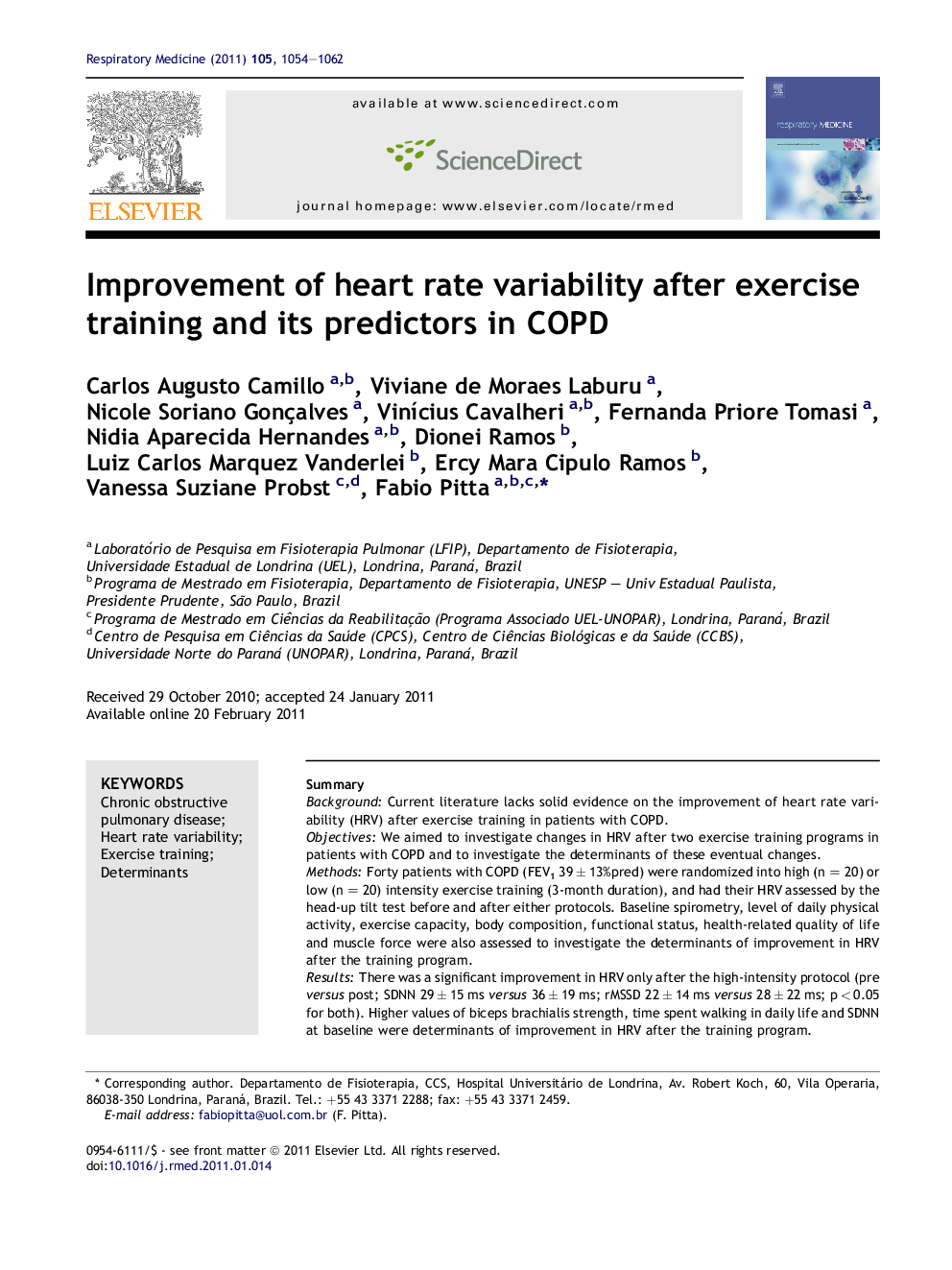| Article ID | Journal | Published Year | Pages | File Type |
|---|---|---|---|---|
| 4211246 | Respiratory Medicine | 2011 | 9 Pages |
SummaryBackgroundCurrent literature lacks solid evidence on the improvement of heart rate variability (HRV) after exercise training in patients with COPD.ObjectivesWe aimed to investigate changes in HRV after two exercise training programs in patients with COPD and to investigate the determinants of these eventual changes.MethodsForty patients with COPD (FEV1 39 ± 13%pred) were randomized into high (n = 20) or low (n = 20) intensity exercise training (3-month duration), and had their HRV assessed by the head-up tilt test before and after either protocols. Baseline spirometry, level of daily physical activity, exercise capacity, body composition, functional status, health-related quality of life and muscle force were also assessed to investigate the determinants of improvement in HRV after the training program.ResultsThere was a significant improvement in HRV only after the high-intensity protocol (pre versus post; SDNN 29 ± 15 ms versus 36 ± 19 ms; rMSSD 22 ± 14 ms versus 28 ± 22 ms; p < 0.05 for both). Higher values of biceps brachialis strength, time spent walking in daily life and SDNN at baseline were determinants of improvement in HRV after the training program.ConclusionsHigh-intensity exercise training improves HRV at rest and during orthostatic stimulus in patients with COPD. Better baseline total HRV, muscle force and daily physical activity level are predictors of HRV improvements after the training program.
